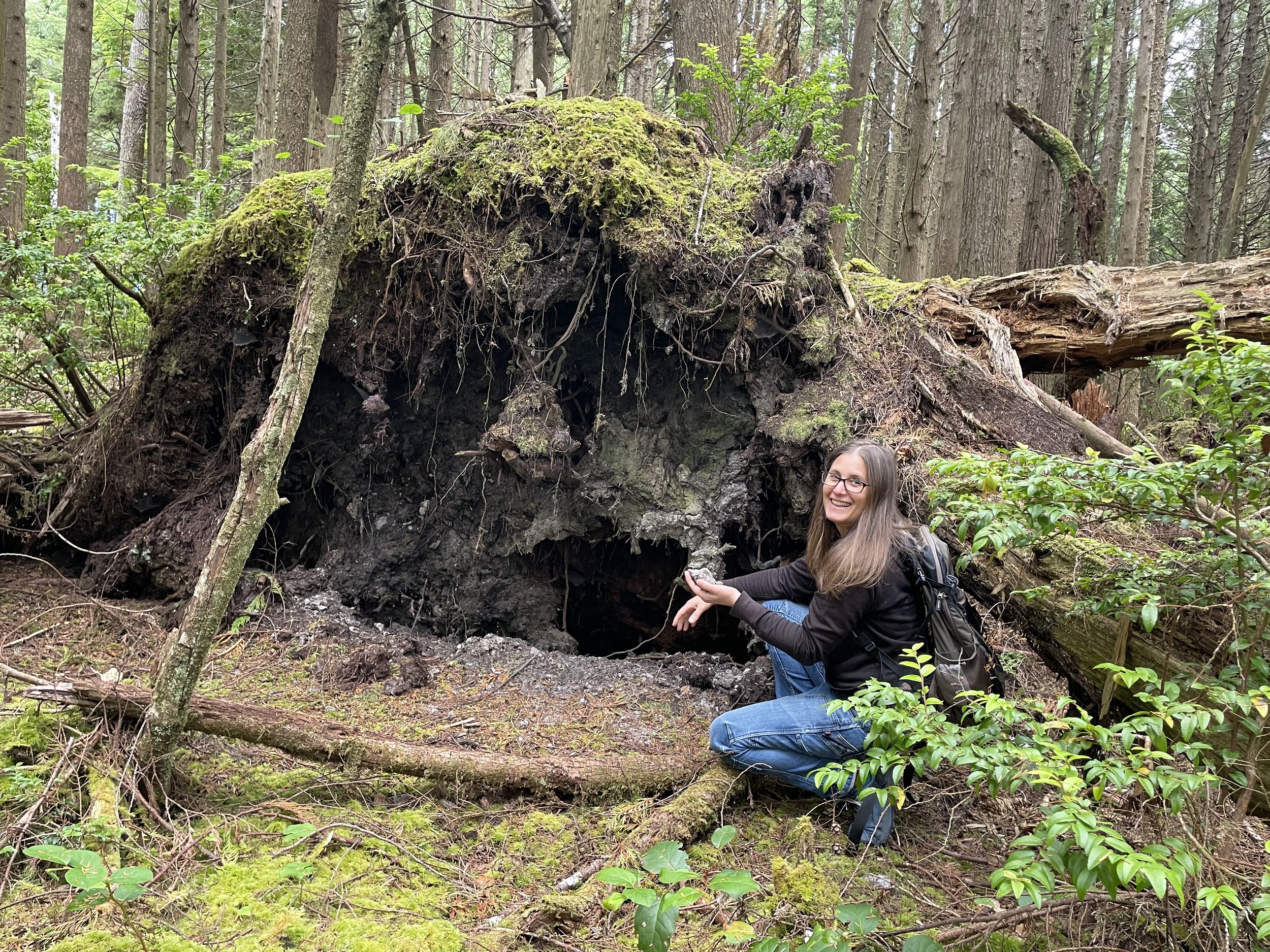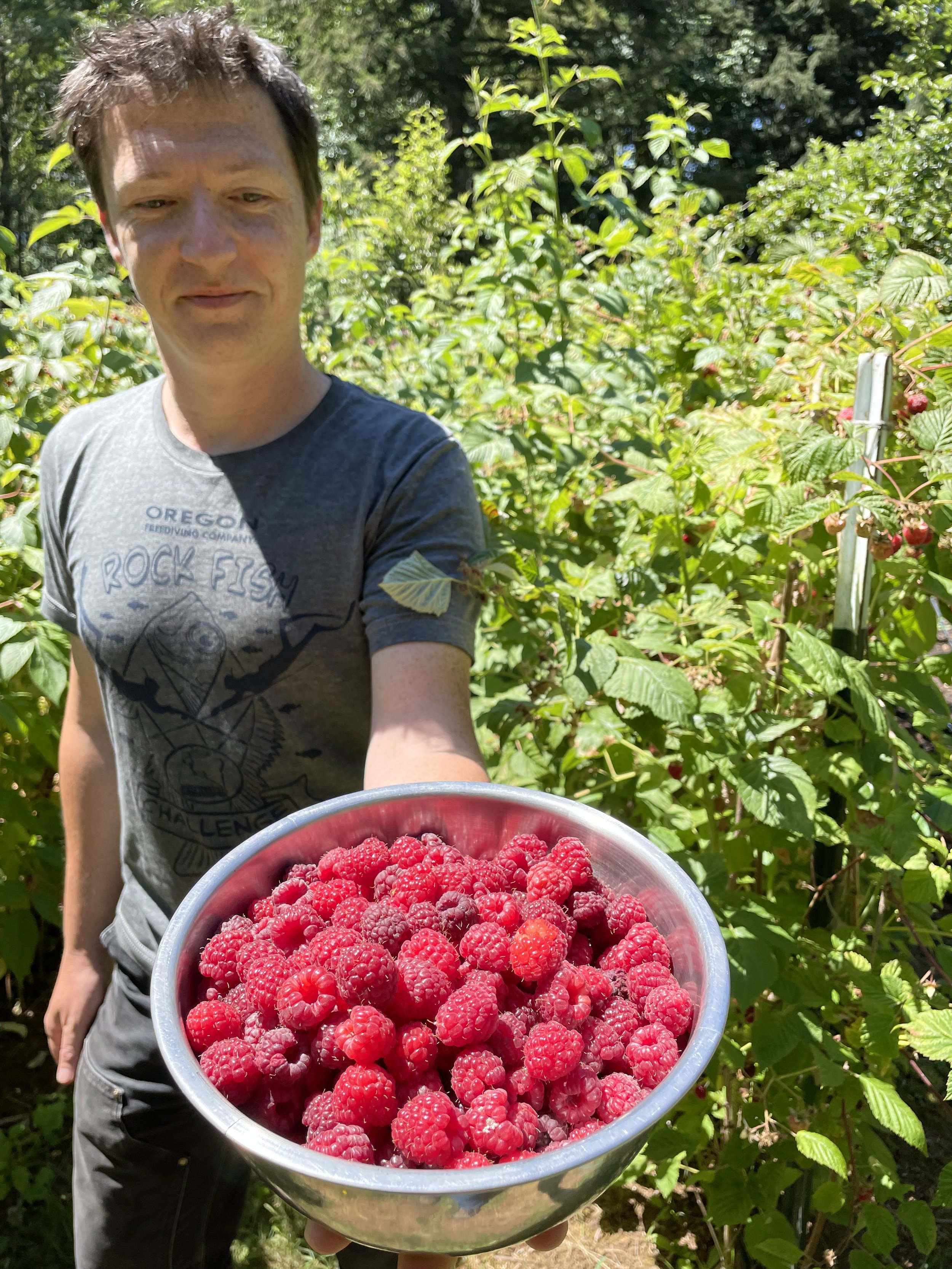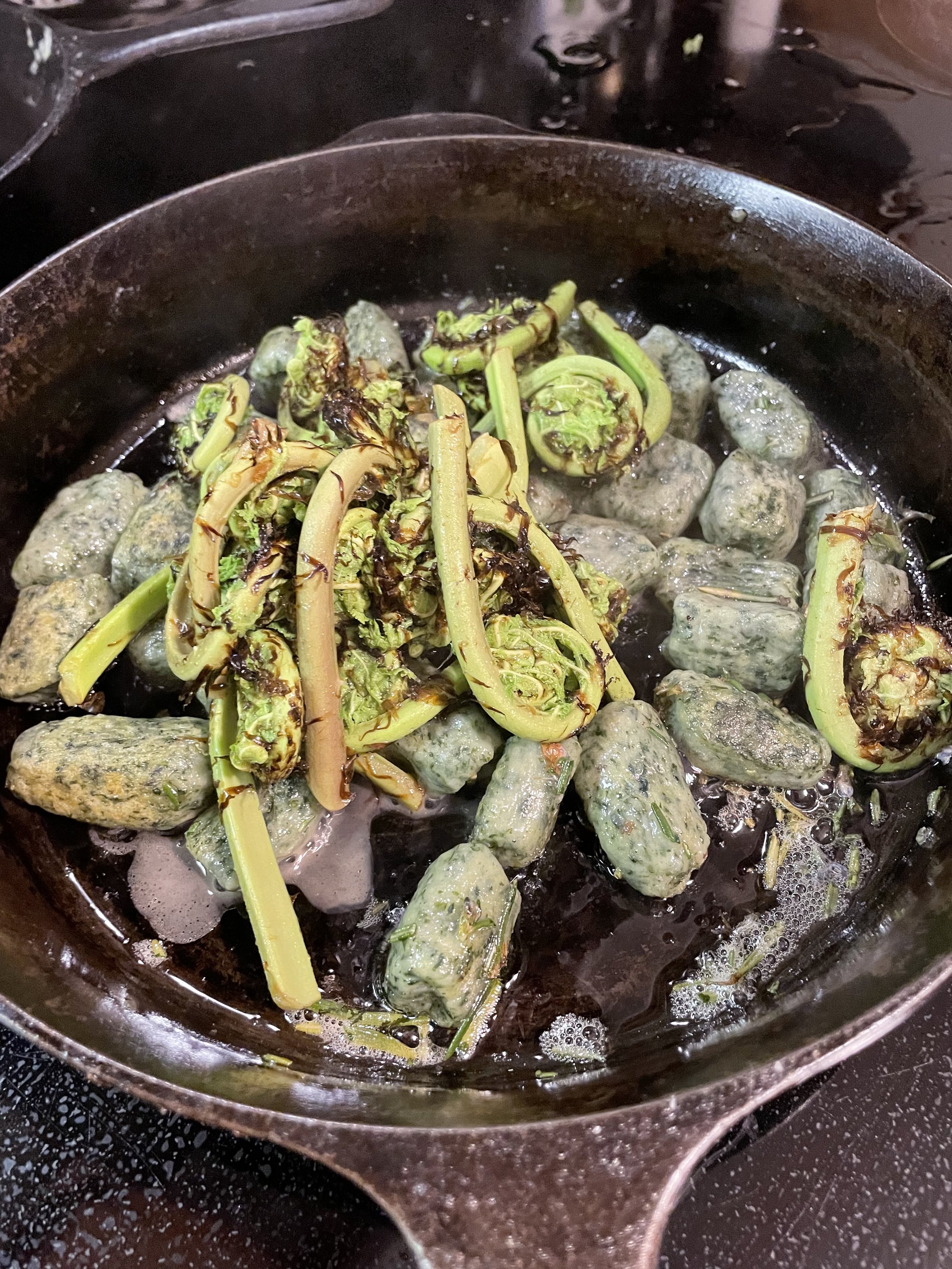Hello from the foothills of Mt. Hood.
I’m a dedicated maker, gatherer and educator, most often guided by the seasonal cycles of my Pacific Northwest home. I tend toward creating in ways that connect me to the places I live, eat and wander, which opens up and deepens these relationships over time. A joyful result is a life of creating that is often rooted in natural fibers, dye mushrooms & earth pigments.
My professional life as an educator has revolved around teaching, designing and supervising programs for adults and kids in the outdoors, mostly focused on deepening ecological, place-based relationships and homesteading craft. With that said, Death found me in 2005, and has been teaching me valuable lessons ever since. After studying with many teachers since then, I have dedicated regular attention to how we as people face death and dying since 2019. Interested in learning more about my End-of-Life and After Death Care offerings and education path? Head here. The photo below is of me working on my first willow casket at home in our studio. This is one of the ways I’ve been able to weave my fiber craft and death and dying work together.
I started weaving myself into the Pacific Northwest over 25 years ago. Although I was raised in the wetlands of the Great Lakes and carry the visceral memory in my flesh and bones, the West’s rugged mountains, lush valleys and generous coastal bays are now home. I’ve always used the same pronouns, but can’t shake that feeling of being a “we” or “they”, especially after learning about the many microbes that make me the walking, eating, breathing, pooping, earthly constellation I am. It is incredibly humbling and one of the reasons I love learning about the microscopic world around and within me.
It’s also one of the reasons I am committed to giving my body back to the soil when I die, in the most ecologically-friendly way possible. Compost me or bury me in a willow casket or shroud, and let the microbes do their best work transforming me into the plants, animals and wild places that have enriched and saved me over the years.
With all that said, what we choose for ourselves is a deeply personal choice and as a Death Educator I’m deeply respectful of where people are in their decision-making. I always try to remain curious and work to build understanding.
You’ll often find me alongside David, attempting to grow and forage enough food to make a decent dent in the grocery bill. It takes a good deal of time growing, fermenting, canning, freezing and drying. We’re planning to put up a greenhouse in the next year or two as well to better extend the growing seasons.
David is a trained botanist and wildlife biologist who helped build the outdoor organization with whom we worked for over a decade. He woo’d me with homemade raspberry wine when we first met, but today elderberry wine takes up most of the shelf space. Over the years he’s added homemade, wild-infused miso, shoyu and tamari to his many ferments. Still seducing me with food and drink to this day.
You can find our homestead perched along a pre-colonial Native trade route between the tribes residing east and west of the Cascades. This route later became part of the Oregon Trail, and taken by folks with covered wagons in the late 1800s. Today, our eight acre homestead is visited regularly by strong winds from the Sandy River valley and buffered by forests ready to burn any year now. It’s a place on the edge of big change.
We experiment with different growing methods, always anchored in doing our best for the health of the land, pollinators and planet. That means we’re not tilling, but trying out no-dig or “less-dig”, water conservation and scaling up our composting. We’re doing what we can to build healthy soils and to encourage healthy habitat for birds and insects. One of my great loves is taking photos and videos of insects and other wildlife interacting in the gardens.

What we’re growing
We’ve been slowly transitioning 1.5 acres of blackberry and pasture into gardens, orchards, and pastured or browsing animal habitat. Six sloping acres in the back are covered in mixed conifer forest and wild habitat as well. We’re always pulling old barbed wire, bottles and the remnants of former homesteading from the duff back there.
Our focus has been on feeding ourselves and loved ones and are starting to expand to growing for others as well.
When we’re not foraging for food and craft, we’re thinking about growing it. We are rewarded with full bellies and colorful lifestyles, however the birds singing, insects buzzing and bats dropping out of the eaves at sun set are the rewards that really fill me up.
Our priorities have been:
Seed saving
Veggies
Fruiting shrubs
Fruit and nut trees
Native plants for pollinators, food and seed
Dye plants
Nettle for food and fiber
Mushroom cultivation
Medicinal plants
For 2024 & 25:
Flowers and other plants for wreath making
Basketry Willow






